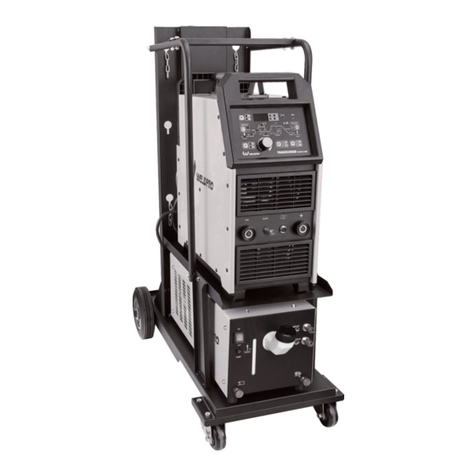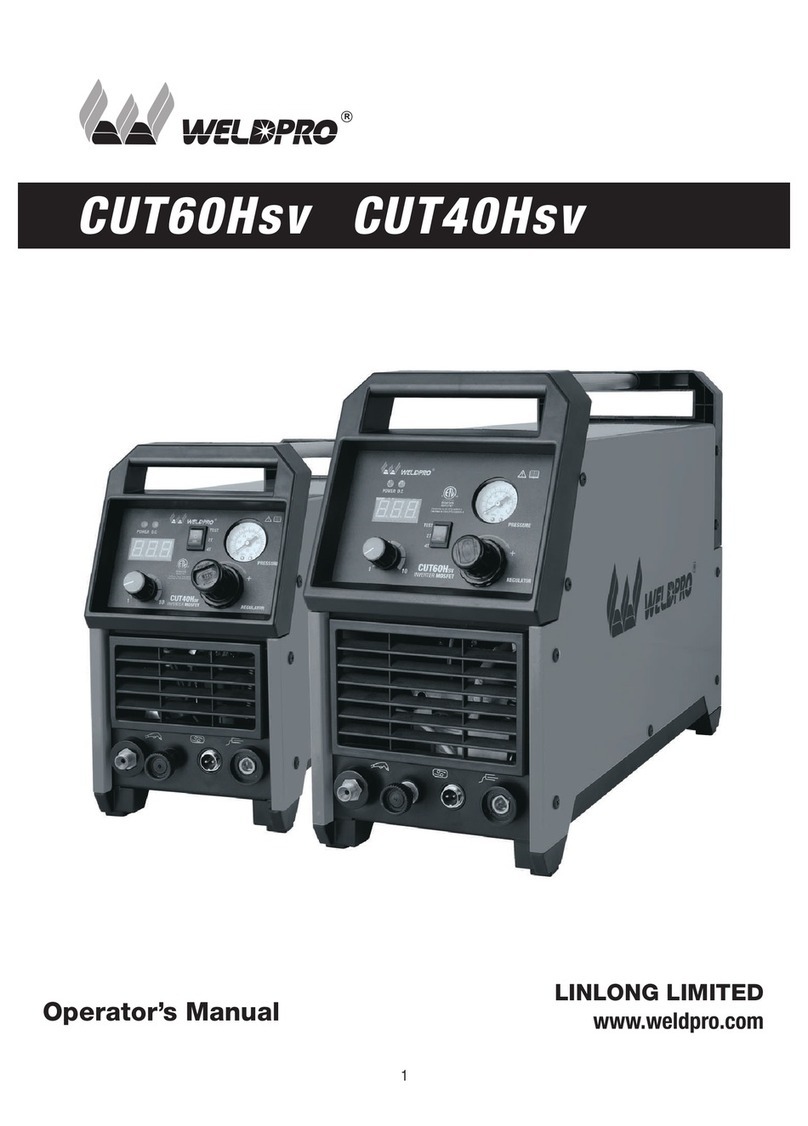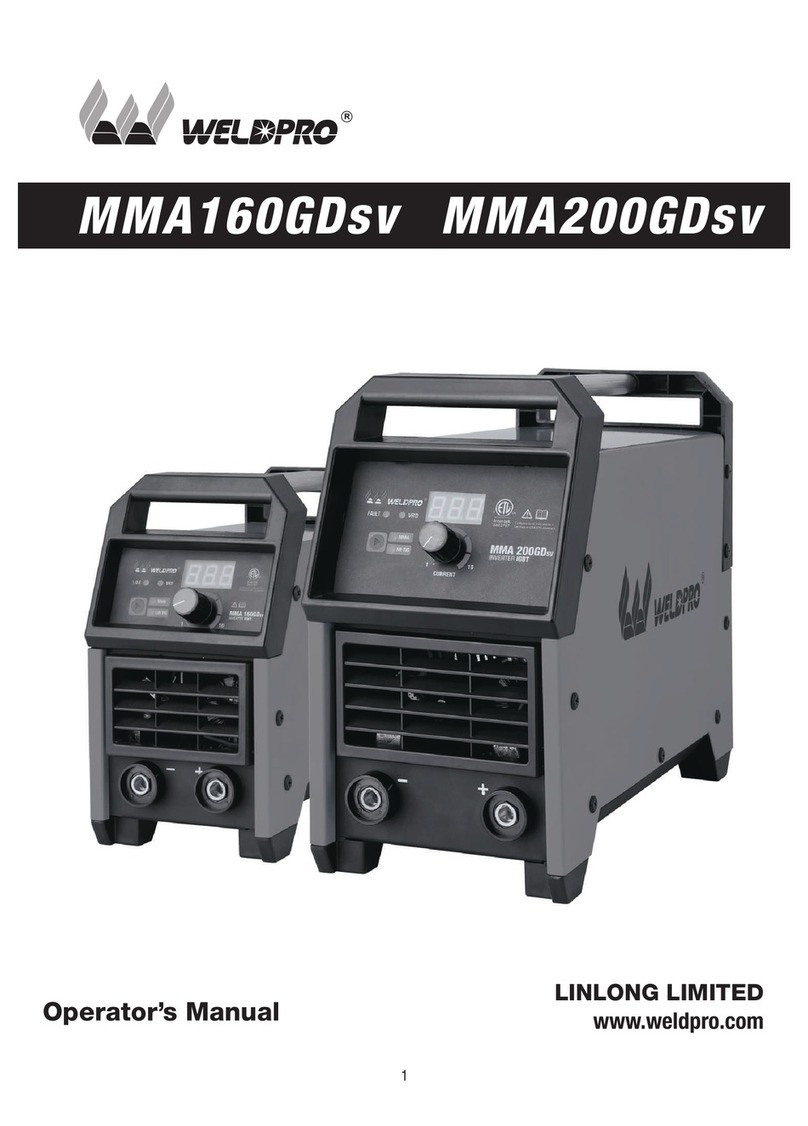
1. General Safe Practices
Become trained and read the instructions before
working on the machine or welding or cutting. Read
and understand the Safety Data Sheets (SDSs) and
the manufacturer's instructions for adhesives,
coatings, cleaners, consumables, coolants, de-
greasers, fluxes, and metals.
Wear approved safety glasses with side shields under your welding helmet or face shield
and at all times in the work area.
Read and follow all labels and the Owner's Manual carefully before installing, operating, or
servicing unit. Read the safety information at the beginning of the manual and in each
section.
Wear a safety harness if working above floor level. Keep children away from all equipment
and processes.
Do not install or place machine on or over combustible surfaces.
Use GFCI protection when operating auxiliary equipment in damp or wet locations.
Use only genuine replacement parts from the manufacturer.
Perform installation, maintenance, and service according to the Owner's Manuals, industry
standards, and national, state, and local codes.
2. Arc Welding Hazards
Electric shock from welding electrode or wiring can kill.
Wear dry, hole-free insulating gloves and body protection. Do not touch electrode with
bare hand. Do not wear wet or damaged gloves.
Do not touch live electrical parts.
Do not use AC weld output in damp, wet, or confined spaces, or if there is a danger of
falling.
Use AC output ONLY if required for the welding process.
If AC output is required, use remote output control if present on unit. Do not use worn,
damaged, undersized, or repaired cables.
Additional safety precautions are required when any of the following electrically hazardous
conditions are present: in damp locations or while wearing wet clothing; on metal
structures such as floors, gratings, or scaffolds; when in cramped positions such as
sitting, kneeling, or lying; or when there is a high risk of unavoidable or accidental contact
with the workpiece or ground. For these conditions, use the following equipment in order
presented: 1) a semiautomatic DC constant voltage (wire) welder, 2) a DC manual (stick)
welder, or 3) an AC welder with reduced open-circuit voltage.
7
































